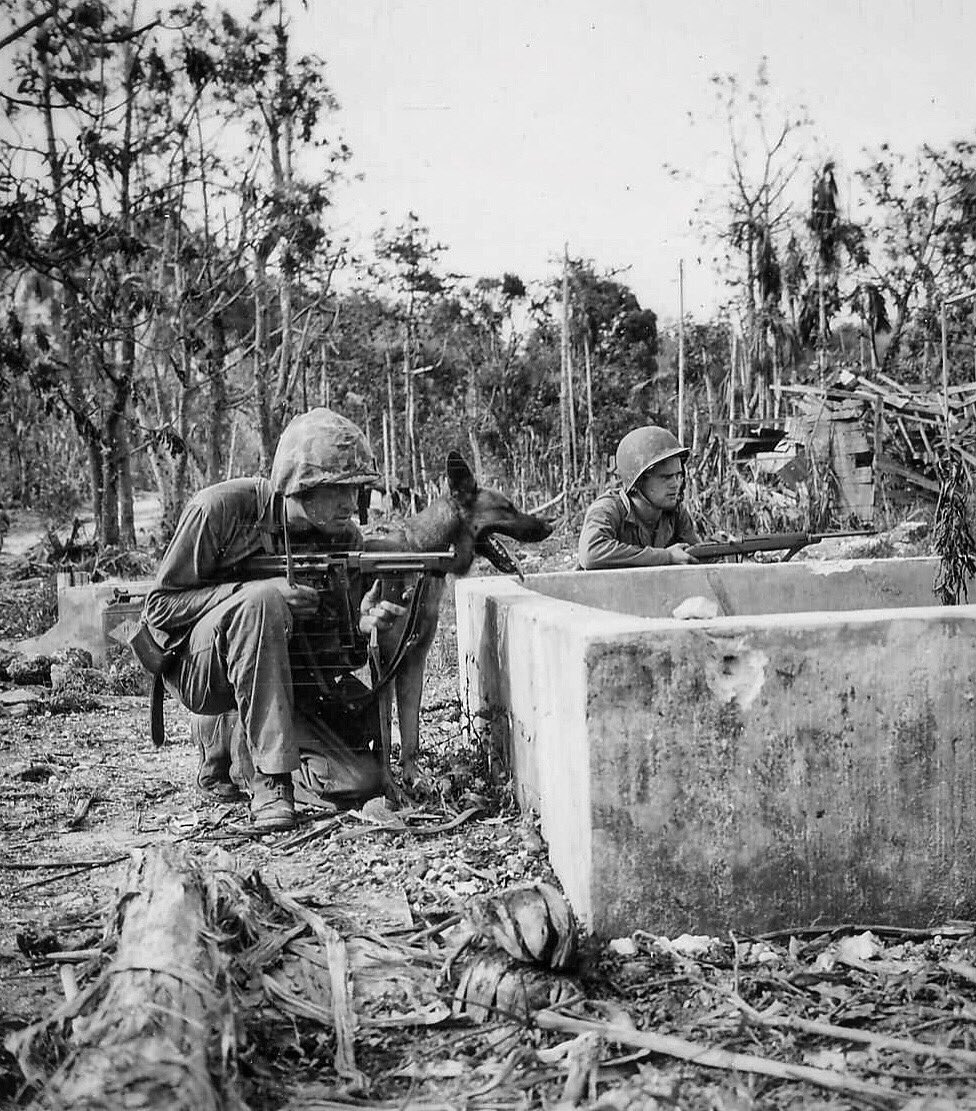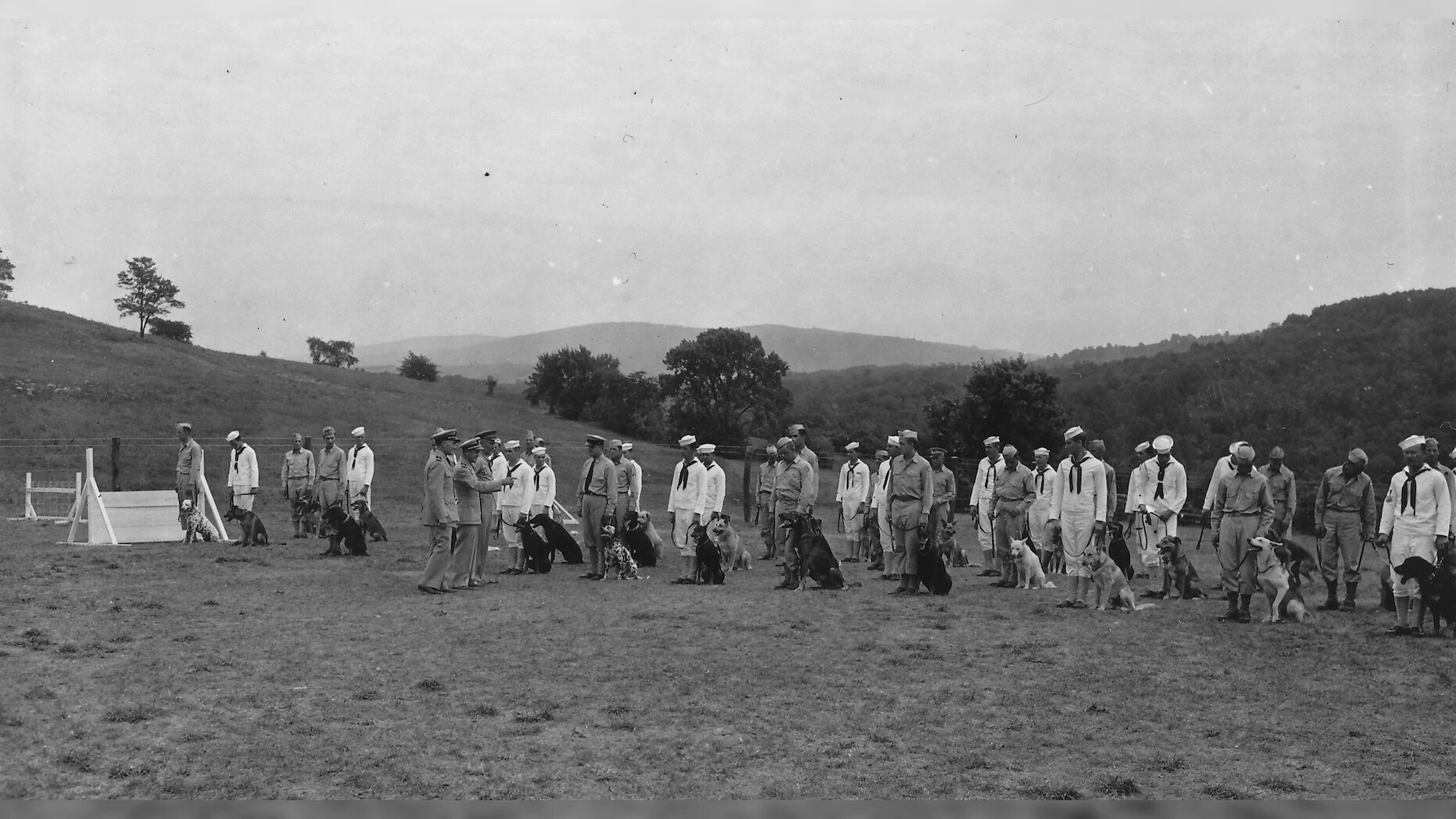
U.S. Marine and war dog taking cover,
1944, USMC Archives
War communication plays a crucial role in the outcome of every battle. Allies need to disseminate information about their strategies and their enemies.
Before messenger dogs were fully adopted in war, the military relied on radio or telephone wires for their communication. However, in dense areas like jungles, such communication was practically non-existent. This was where the messenger dog’s job came in.

U.S. Marine and war dog taking cover,
1944, USMC Archives
Dogs outrank humans in almost every aspect: speed, size, hearing, sense of smell, and many more. These traits enable them to deliver messages from one place to another in a limited amount of time.
"The dog game must play its part in this thing. Other countries have used dogs in their armies for years and ours have not... Just think what dogs can do guarding forts, munition plants, and other such places." - Arlene Erlanger, 1941
Marines and canines awaiting action, 1944, National Archives
Occasionally, messenger dogs would also work as transport, assist in moving emergency supply loads, and deliver carrier pigeons that were strapped to their backs.

War dogs in training, 1943, National Archives
"Every known distraction must be introduced during training, such as bomb detonations, shell and gunfire, troop and motor traffic, and the presence of moving stationary troops, civilians and animals." - War Animals: The Unsung Heroes of World War II by Robin Hutton, 2018